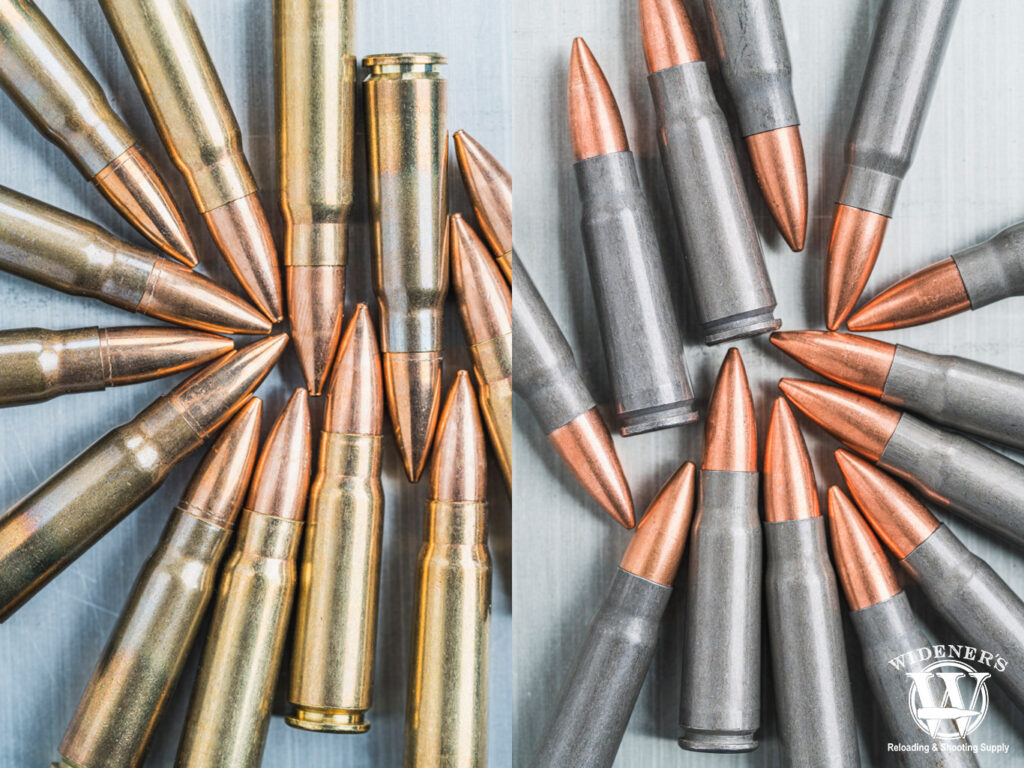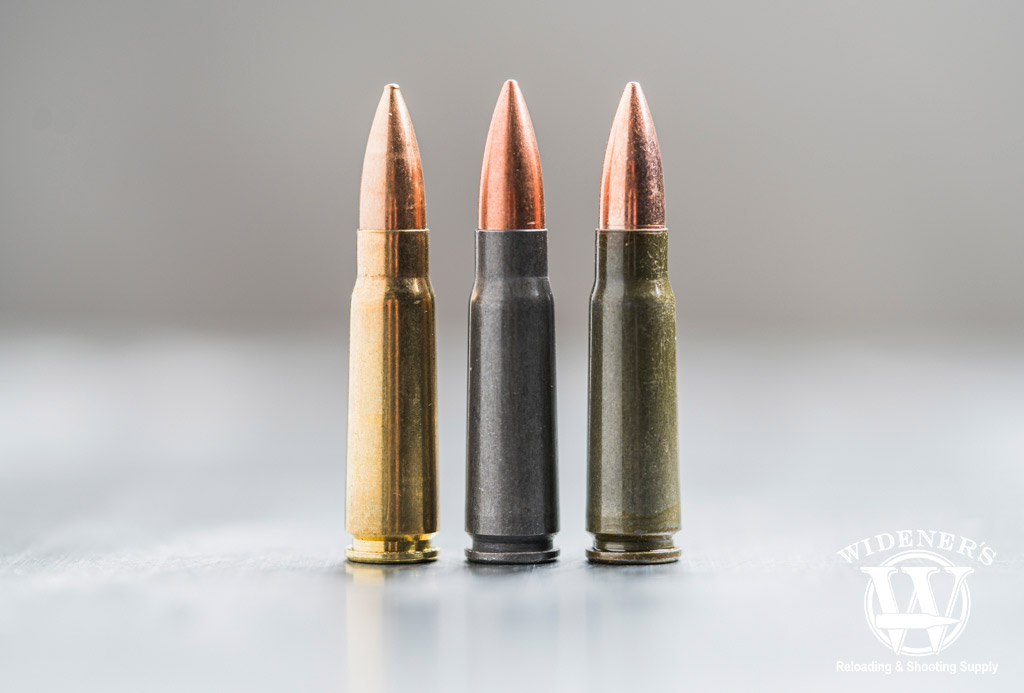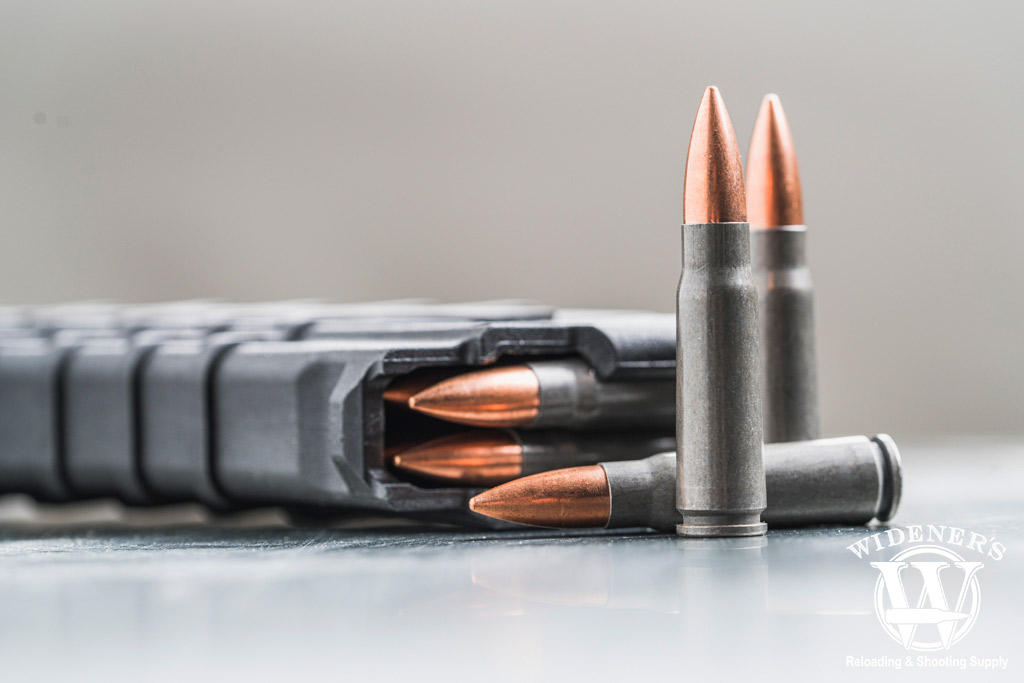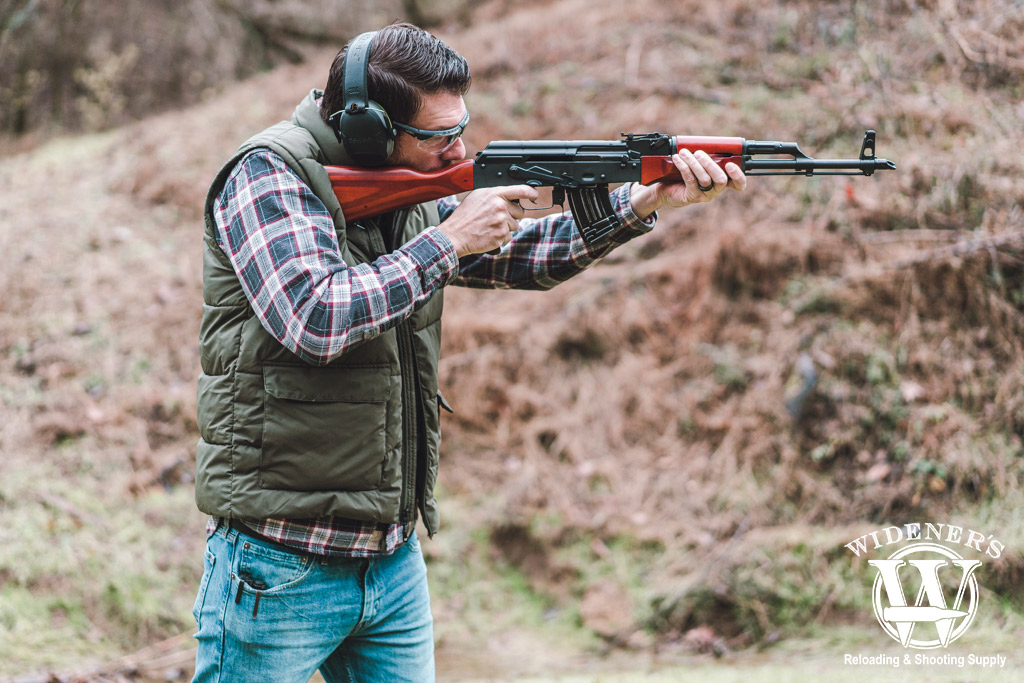

As a lifelong firearms enthusiast and avid shooter, I have learned a lot about the gun community over the years. One undeniable thing is that gun owners love to debate just about anything. When it comes to steel vs. brass ammo, the debate never ends.
Want proof? Post a comment promoting a specific gun, cartridge caliber, or optic on any firearms forum and wait a few minutes. Within the hour, you will likely see dozens of comments on your post, some of which support your position and an equal number arguing against it.
A few of the most well-known debates in the gun world include 9mm vs. 45 ACP, 1911 vs. Glock, and of course, .223 vs. whatever the trendy new AR caliber is that year (I’m looking at you, .300 blackout).
While I’d like to say that we’ll put another great gun debate to bed in this article, it will probably only add more fuel to the fire.
What Sparked The Steel VS Brass Ammo Debate?

Steel VS Brass: Both options have their place, assuming that quantity vs quality plays into your shooting routine.
Before we get into the root cause of the steel vs. brass ammo debate, let’s clarify before I start getting fact-checked. When I say “steel vs. brass ammo,” I’m referring to steel-cased vs. brass-cased cartridges. While you probably already knew that, there is always at least one commenter that likes to point out the obvious, and it never hurts to beat them to it.
When ammo prices were low, most shooters wouldn’t dream of putting steel-cased cartridges in their favorite firearms. However, those days are long gone, and everyone is tightening their wallets. Instead of shooting less (an idea I’d never support), many shooters save a few bucks by buying steel-cased ammo instead of traditional brass-cased ones.
Steel VS Brass: Settling The Cartridge Debate

A variety of 7.62×39 ammo, from left to right: Brass Cased, Steel Cased, and Lacquered Steel Cased.
If you want the TLDR version (that’s “too long, didn’t read”) of the steel vs. brass debate, brass is better all the way around. Brass-cased ammo outpaces steel in every metric, except for cost. However, many other factors impact the quality and performance of ammo. A few other factors include:
- The projectile itself (of course).
- The quality and amount of powder.
- The tolerances to which the manufacturer adheres.
In most instances, manufacturers adhere to stricter tolerances when producing brass-cased ammo because they know their audience. On the other hand, manufacturers understand that individuals purchasing steel-cased ammo usually look for a cheap practice cartridge that won’t break the bank. That’s why they get a little looser on the tolerances and quality control.
What does that mean for you? Depending on the condition of your firearm, you aren’t going to have any issues running brass-cased ammo. It’s unlikely, but possible, that your gun may not run steel-cased ammo as smoothly as brass. Meaning, you may have to manually clear a few casings that didn’t eject correctly if you’re shooting a lot of steel-cased ammo.
Let’s take a closer look at each casing material’s pros and cons and settle this debate for good.
The Good And Bad Of Brass

Brass-cased ammo can be reloaded and is generally considered to be more reliable.
Generally speaking, brass ammo creates a more secure seal than steel alternatives. This means that blowback will be reduced, thereby improving bullet performance. Less blowback means your gun won’t get quite so filthy, since not as much unburned powder and gas will be forced into your gun.
Brass is also more malleable, meaning it is not as rigid and can be reshaped without breaking or cracking. The high malleability of brass means you can reload it, too. Reloading your cartridges is an excellent way to keep your ammo costs in check, but it does take some finesse.
The only downside to brass ammo is that it is more expensive than steel. If you are working on a relatively tight ammo budget, it might be tough to support your habit if you are a brass ammo purist. The per-round cost difference between brass vs. steel is almost negligible. But, opting for the more expensive material can cost you hundreds of dollars extra over an entire year, presuming you shoot a lot, of course.
What’s The Deal With Steel?

Steel-cased cartridges can’t be safely reloaded, but they can be recycled.
Steel is a more rigid, less malleable material. As such, you can’t use steel cartridges for reloading purposes – at least, not safely. When you fire a steel-cased projectile, the cartridge is more resistant to the force generated by the gunpowder. That means it won’t expand, so it won’t create as good of a seal. This property is why many people call steel cartridges “dirty” rounds, since they blow back more residue into the action of your firearm.
If you’re on team “brass,” you’re probably ready to take a victory lap right about now. And if you are in the other camp, you may be rethinking your choice of ammo. But don’t ditch all your steel ammo just yet. The alternative to brass does have a few redeeming qualities.
For instance, the rigidness of the steel casing does mean that it can extract better in certain firearms, such as those with exceptionally violent cycling mechanisms. If you have a gun with a violent cycling mechanism, like an AK-pattern firearm or old surplus rifles from Europe or Russia, steel will probably function great in your weapon system.
Also, steel is cheaper, meaning you can log more time on the range. Just be sure to invest in a quality cleaning kit, since you’ll certainly need it.
The Bottom Line: Brass Is King, But Steel Isn’t “Bad”

Steel vs brass ammo? Save yourself a few dollars and use steel at the gun range, invest in brass for everything else.
Brass is undoubtedly the better casing material for ammo. This fact holds whether you’re firing an old-school straight-walled cartridge like .45-70 ammo or something more modern such as a 6.5 Creedmoor.
However, that doesn’t mean steel cartridges don’t have a place in your ammo box. I’d stick with brass for hunting, self-defense, and competition situations. But steel cartridges can be a good fit for other applications, such as drilling or recreational target shooting. The bottom line is this: brass is better.
However, steel certainly isn’t “bad,” especially if you need to save a few bucks without sacrificing range time. If you’re interested in the aluminum vs brass debate, be sure to check out our article here.


